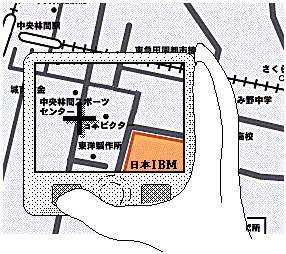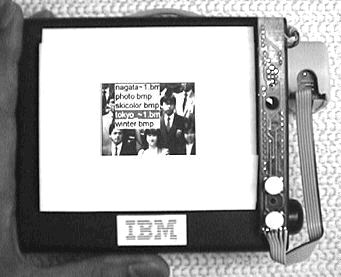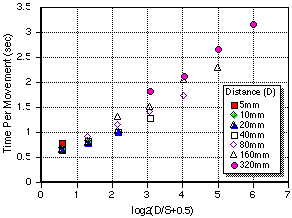
Itiro Siio
Tamagawa University, Faculty of Engineering
6-1-1 Tamagawagakuen, Machidashi, Tokyo 194-8610, Japan
siio@eng.tamagawa.ac.jp
The limitations of palmtop computers are their display size and pointing mechanisms. This makes it difficult to use them for direct manipulation of very large objects, such as World Wide Web (WWW) pages, newspapers, maps, and documents that require a large display. This paper describes a new palmtop computer with a built-in mouse on the underside of the computer. When a user moves the computer on a table, the display scrolls as if the user is moving a window frame over a large document. Experiments using a prototype have shown that locating targets outside of the display is as easy as targets within the display.

The Scroll Display is designed to achieve intuitive scrolling actions by integrating mouse components into a palmtop computer. An implementation of the Scroll Display mechanism is shown in Figure 1, where mechanical mouse parts are installed on the underside of a palmtop computer. When a user moves this computer on a table, the movement is detected by the mouse mechanism.
Through proper programming to scroll the contents of the display against the movement, the Scroll Display gives the illusion of moving a window frame over the top of a large document, which is virtually spread over the table (Figure 2). With the use of spatial awareness, the user is able to easily find targets on a large object. For example, users can easily find a target on an object such as a newspaper article or buttons on web page when they are arranged in standard format. It is also easy to find landmarks on a map if the user has a rough knowledge of the geographical layout. The Scroll Display provides the user (who has a mental model of moving window frame) with a simple and intuitive means for browsing.

@

To show the usability of the Scroll Display, a prototype was made using a liquid crystal display (Sony, FDL-X40) and serial mechanical mouse (Sanwa Supply, MA-P250PS) parts as shown in Figure 3.
The prototype was built to verify the feasibility of the Scroll
Display concept. Therefore, the hardware was developed at palmtop
size and is not built into a stand-alone palmtop computer. The
prototype (Figure 5) is connected to a notebook PC (IBM ThinkPad
760E) via its display and mouse ports. The notebook PC is connected
to a desktop PC (IBM PS/V) via infra red link and Ethernet,
exchanging mouse and file data, respectively.
We have measured the time to locate a target, based on the Fitts's law. Testing patterns with a start area and a target area were prepared. Figure 7 shows one of the patterns, of which the target width (S) is 10 mm, and the distance (D) between the right edge of the start area and the center of the target area is 40 mm.
Figure 4 shows results of the experiment. This graph shows the average of elapsed times for the six subjects against the logarithm part of the FittsŐs law. Most of the farther targets farther than D = 22.3 mm are out of the display at starting time, because the width of the display is 44.5 mm. However, the graph shows that all of the measurements including those with farther targets tend to come into line. This suggests that the subjects treated far and near targets equally. It can be said that the mental model of moving a virtual window, which is provided by the Scroll Display, was accepted by the subjects.
